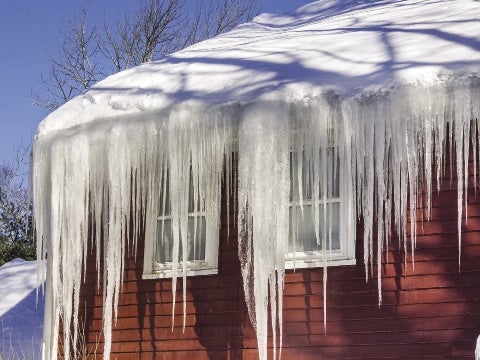It doesn’t pay to underestimate the damage cold weather can do to your business, as some of us have discovered the hard way over the past several weeks. A 2014 report by Munich Re on natural catastrophes found that the greatest losses in North America were caused by an unusually cold winter.
In addition to the damage caused to commercial property by adverse weather, businesses must also count the cost of power outages, and the impact of blocked roads and school closures on productivity.
How can you protect your business from severe weather? Here are three things you need to do.
Assess your risk
Examine your current systems and business processes to clarify the consequences of a power outage, work stoppage or significant damage to property or machinery. Prioritize core functions so that the most important equipment is protected or is the first to be repaired. Calculate what a period of inactivity will cost your business.
Standard buildings insurance will cover most of the damage resulting from a freeze or snow and ice damage. However, you may not be covered for flooding caused by a backup in sewers or drains, or the inevitable business interruption caused by a wait for repairs to be completed. Check your insurance policy to confirm the extent of your coverage and determine whether you need — and can get — an extension.
Shore up your defenses
Establish an inspection plan to make sure your business is protected from the cold. Keep sidewalks and entrances to your business free from snow and ice. Pay particular attention to ice forming on tree limbs on the property that could cause dead branches to fall and injure an employee or visitor. Look out for ice dams near gutter downspouts, which lead to water seepage, and keep gutters free so melting snow and ice can flow freely. You should also keep a watchful eye on any buildup of snow or ice on your roofs.
Keep the building heated to at least 65 degrees even when the building is closed for the night. Otherwise, pipes are likely to freeze and burst. Invest in a backup generator to ensure continuous power, and install a monitoring system to warn you should the temperature inside the building drop to a dangerous level. Sprinkler systems should also be monitored to ensure early detection of a pipe failure, and a monitored automatic excess flow switch can be placed on the main incoming water line to ensure early detection of a broken pipe or valve.
Have a plan of action
Create a comprehensive disaster recovery plan that takes in every conceivable risk so you can minimize unnecessary delays should the worst happen. Document key business processes and ensure that sensitive and vital information is stored securely at more than one location. Set clear roles and duties so recovery will not be hampered by the absence of one key individual.
With a little preparation and a proactive approach to the risks of severe weather, your business stands the best chance of greeting the spring with a full bill of health.
Scott Lacourse is a director at Enservio, of Needham, which offers software and services for contents claim processing.

